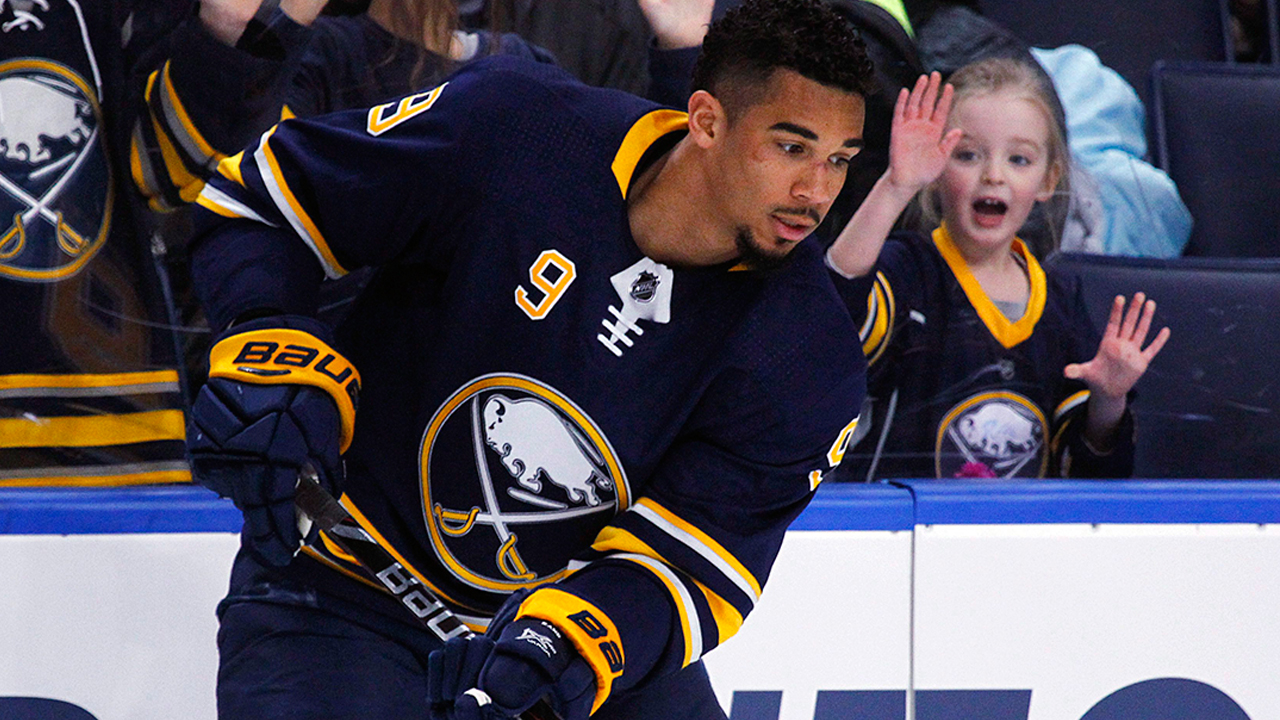One of the biggest names available at the trade deadline this season is the Buffalo Sabres’ Evander Kane. On an expiring deal paying him just $5.25 million this season, just 26-years-old, and on pace for 53 points on the lowly Sabres despite an 8.5 shooting percentage, Kane is an attractive option.
For whatever reason, Kane has been a low percentage shooter throughout his career, scoring on less than nine per cent of his shots on goal for five of the previous six seasons. But his impact on team performance this season has been incredible.

It’s worthwhile to note that the Sabres are one of the league’s worst teams, and Kane spends almost all his ice time with one of their two best players in Jack Eichel or Ryan O’Reilly, but even so, Buffalo sees huge positive changes in on-ice performance at even strength when Kane is on the ice.
Of the five different line combinations Kane has been on for 60 or more minutes this season, all of them are above team average in Corsi, goals for, and expected goals for, most of them by a large margin in all three measures.
It’s not surprising that Kane is able to exert that kind of impact when you look at the type of player he is: a fast power forward who shoots as often as he possibly can. Since the 2010-11 season, only seven NHLers have put more than his 1,842 shots on net.
Even if Kane has only scored on 8.8 per cent of those shots, they create rebounds and second chance opportunities for his linemates to cash in on.
Kane’ low shooting percentage is odd though, and makes you wonder if he shoots from the perimeter far more often than most. We can dig deeper and see how his scoring chances measure up to his shot metrics.

The Sabres don’t get as much offensive zone time as most teams, but Kane measures up really well relative to team average — not just in scoring chances, but in high danger chances, too.
As a portion of his total shot attempts, 23.9 per cent come from the high danger area, and 49.1 per cent come from the slot. Not much changes for his actual shots on goal either, as 49.1 per cent of those come from the slot, and 27.6 per cent come from the high danger area. Those are solid-to-great numbers, and yet he’s scoring like a very mediocre shooter.
I think part of the problem might be that goalies know Kane is always going to shoot. He’s not a good playmaker, with most of the scoring chances he generates for his teammates coming off his shots being saved but not controlled. If goaltenders know he’s going to shoot, they don’t need to cheat for the pass and give him better looks.
Even with a low shooting percentage, Kane is a dynamite player who could improve a lot of teams at the deadline with his combination of driving play and physicality, but one thing that could hurt his trade value is his off-ice reputation.
When acquiring players for playoff runs, teams look at more than just on-ice results, and Kane’s history of clashes with teammates and off-ice altercations outside of team functions might convince some teams that his offensive prowess isn’t worth the baggage, or that he could be a distraction from the group they already have.
Those are questions each potential suitor will have to weigh internally, but when it comes to hockey, there’s no question Kane can be a difference maker.
[relatedlinks]







